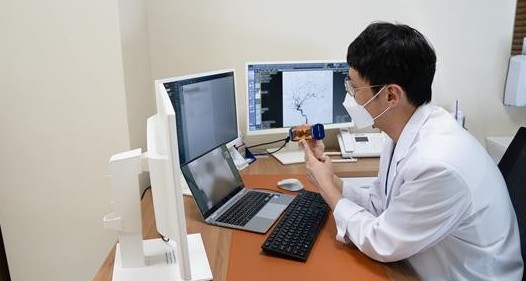
telemedicine consultations surged to twice their previous volume following the comprehensive expansion on February 23.
SEOUL, Mar. 4 (Korea Bizwire) –In response to collective action by trainee doctors opposing a significant increase in medical school admissions, the government’s full-scale expansion of telemedicine services has led to a twofold increase in its usage.
To address the potential medical service gaps at major hospitals, particularly those serving as training institutions for resident physicians, the government extended telemedicine services last month to areas and times beyond just weekdays and medically underserved regions.
According to industry leader ‘Doctor Now,’ telemedicine consultations surged to twice their previous volume following the comprehensive expansion on February 23.
However, ‘Doctor Now’ suggests that this increase is not necessarily due to hospital-level medical service users turning to telemedicine due to the absence of resident physicians but rather to a rise in patients with minor symptoms seeking remote consultations.
Despite the availability of telemedicine at hospitals, the majority of medical institutions offering these services appear to be local clinics.
While both resident physicians and clinic doctors strongly oppose the increase in medical school admissions, the expansion of telemedicine, triggered by the collective action of resident physicians, has inadvertently led to an increase in patient numbers at clinics.
The issue of high consultation fees for telemedicine has been a persistent concern. In South Korea, telemedicine fees are set at 130% of the face-to-face consultation rate, which includes a 30% “telephone consultation management fee.”
This rate is notably higher in Korea than in other countries, where telemedicine fees are generally lower. The decision to set the fee at 130% of the standard consultation rate was made to appease the resistant medical community and encourage participation in telemedicine services.
The Korean Medical Association has argued that telemedicine fees should be at least 150% of the standard consultation rate.
Although the “telephone consultation management fee” is covered by national health insurance, ultimately increasing costs for patients, there are arguments that telemedicine fees should be lower than those for in-person consultations due to the lack of a physical clinical space.
However, physicians argue that telemedicine requires more effort and therefore should command higher fees.
Recent discussions, including those presented in a report by the Korea Institute for Health and Social Affairs titled “The Expansion Direction of Telemedicine: Policy Directions and Tasks,” suggest that a revision of telemedicine fees is necessary.
The report notes that Australia has set telemedicine fees at 50% of in-person consultation rates, with variations based on the type of consultation and duration.
France applied the same fees as in-person consultations during the pandemic but typically sets telemedicine fees at 70% of the in-person rate. In Japan, telemedicine fees are slightly lower than in-person consultation fees, while in China, the U.K., and the U.S., the fees for telemedicine and in-person consultations are the same.
The report emphasizes the need for further discussion on the appropriate compensation level for telemedicine services, suggesting that the current 30% additional compensation, provided as an incentive during the pilot phase, should be reevaluated for long-term implementation.
M. H. Lee (mhlee@koreabizwire.com)






